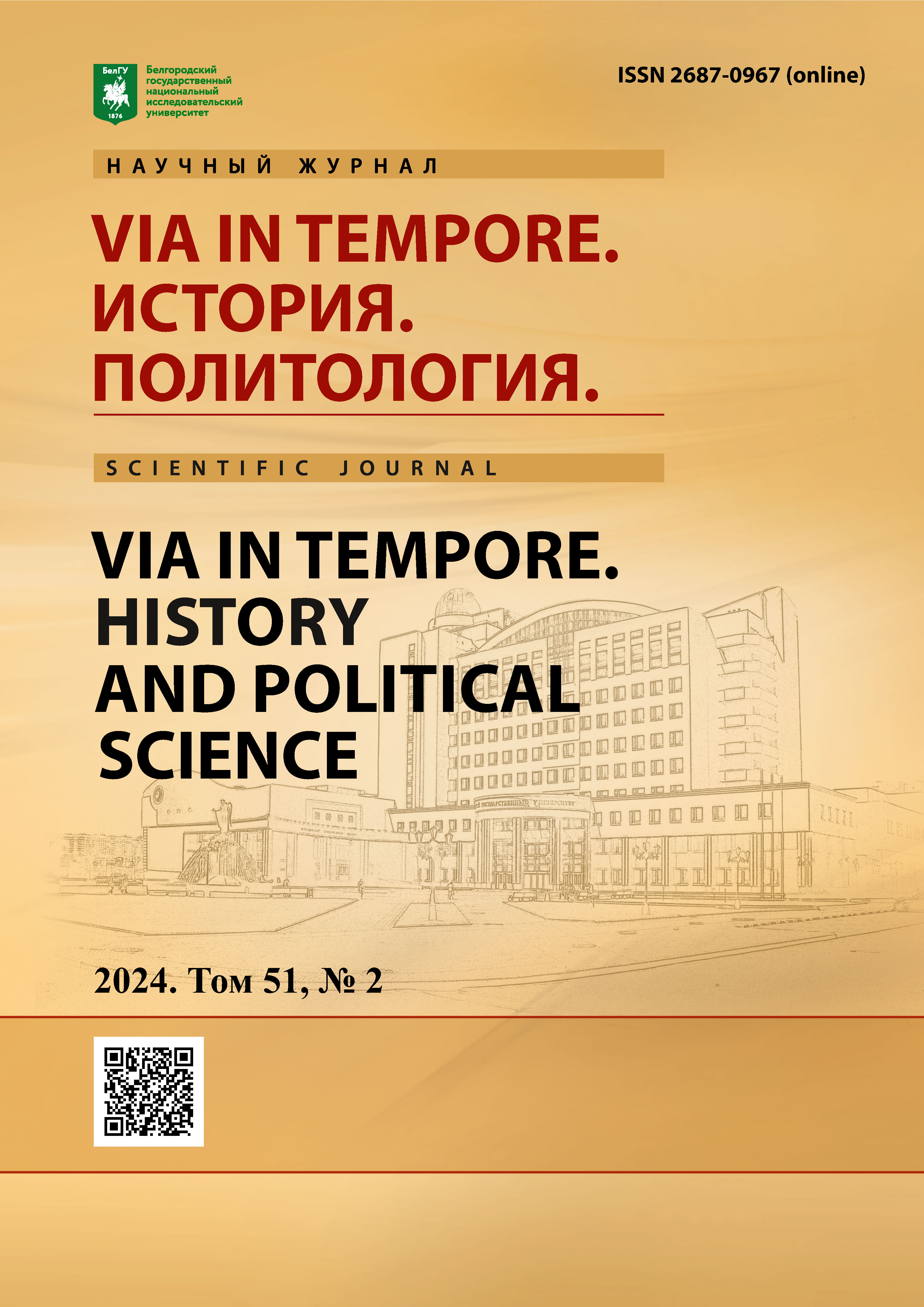Roman Emperor in the Guise of the Egyptian Gods: Images and Texts
DOI:
https://doi.org/10.52575/2687-0967-2024-51-2-297-308Keywords:
imperial cult, Roman Egypt, Anubis, Horus, Amon, Ra, SethAbstract
The author draws his attention to the images of the gods Anubis and Horus in Roman Egypt in this study. These gods could include in their image the iconographic features of the Roman emperor. Horus and Anubis acted as invincible warriors, asserting a fair order in the world, universal deities and civilizers of peoples. These functions corresponded to the image of the Roman emperor, who established the Pax Romana, which made it possible to identify the ruler of Rome and these deities. Giving to Anubis and Horus the iconographic features of the emperor, that was confirmed in papyrus and temple texts, was a consequence of the desire of the inhabitants of the Nile Valley to incorporate the image of the emperor into the religious sphere of Egypt and the result of the adaptation of the religious ideas of the Egyptians to the tastes of the Greco-Roman population of the Nile Valley. At the same time, giving of the Roman features to the Egyptian gods could be a consequence of transferring the sacred status of the king to the deities of the Nile River Valley, although it was not possible for the Egyptians to completely exclude the rulers of Rome from the Egyptian religious system, who, as Egyptian pharaohs, were supposed to ensure a fair order of things («Maat»).
Funding
The work was carried out without external sources of funding.
Downloads
References
Ладынин И.А. 2023. Хор и другие египетские божества в обличье римских воинов: к возможной интерпретации. Восток (Oriens). 5: 224–235.
Павлова О.И. 1984. Амон Фиванский: ранняя история культа (V–XVII династии). Москва, Наука, 143.
Ando С. 2000. Imperial Ideology and Provincial Loyalty in the Roman Empire. Berkeley, University of California Press, 515.
Brophy E. 2015. Royal Statues in Egypt 300 B.C. – A.D. 200: Context and Function. Oxford, Archaeopress Archaeology, 163.
Coppens F. 2021. The Ptolemaic Basileus and the Roman Emperor Slaying the Enemies of Egypt. The smꜣ sbı͗/ḫftyw/ḫꜣswt/sṯt Ritual Scene in Context. In: Continuity, Discontinuity and Change Perspectives from the New Kingdom to the Roman Era. Ed. F. Coppens. Prague, Charles University: 405–490.
Dörner N. 2014. Feste und Opfer für den Gott Caesar. Kommunikationsprozesse im Rahmen des Kaiserkultes im römischen Ägypten der julisch-claudischen Zeit (30 v. Chr.–68 n. Chr.). Rahden, Verlag Marie Leidorf, 551.
Frankfurter D. 1998. Religion in Roman Egypt: Assimilation and Resistance. Princeton, Princeton University Press, 315.
Frankfurter D. 2000. The Consequences of Hellenism in Late Antique Egypt: Religious World and Actors. In: Archive für Religionsgeschichte. Bd. 2. Ed. J. Assman. Teubner: 162–194.
Grenier J-C. 1977. Anubis alexandrin et romain. Leiden, Brill, 212.
Grenier J-C. 1989. Les titulatures des empereurs romains dans les documents en langue égyptienne. Bruxelles, Fondation égyptologique reine Elisabeth, 122.
Heinen H. 2007. Ägypten im Römischen Reich, Beobachtungen zum Thema Akkulturation und Identität. In: Ägypten unter fremden Herrschern zwischen persischer Satrapie und römischer Provinz. Hsrg. S. Pfeiffer. Frankfurt am Main, Verlag Antike: 186–207.
Helck Te W. 1967. Seth, God of Confusion. Leiden, Brill, 168.
Herklotz F. 2007. Prinzeps und Pharao: der Kult des Augustus in Ägypten. Frankfurt am Main, Verlag Antike, 506.
Herklotz F. 2012. AEGYPTO CAPTA. Augustus and the Annexation of Egypt. In: The Oxford Handbook of Roman Egypt. Ed. C. Riggs. Oxford: Oxford University Press: 11–21.
Kantorowicz E.H. 1961. Gods in Uniform. In: Proceedings of the American Philosophical Society. № 4. Vol. 105: 368–393.
Klotz D. 2012. Caesar in the City of Amon: Egyptian Temple Construction and Theology in Roman Thebes. Turnhout, Brepols, 476.
Leibovitch J. 1944. Une statuette du dieu Seth. In: Annales du Service des Antiquités de l‘Égypte. Vol. 44: 101–107.
Levi A.C. 1948. Hadrian as a King of Egypt. In: The Numismatic Chronicle and Journal of the Royal Numismatic Society. № 1/2. Vol. 8. Ser. 6: 30–38.
Mariette A. 1870. Dendérah: Description générale du grand temple de cette ville. Vol. II. Paris, Librairie A. Franck, pl. 1–87.
O’Neill S.J 2011. The Emperor as Pharaoh: Provincial Dynamics and Visual Representations of Imperial Authority in Roman Egypt, 30 B.C. – A.D. 69. PhD Thesis. Сincinatti, 322.
Pfeiffer S. 2009. Octavian Augustus und Ägypten. In: Identität und Zugehörigkeit im Osten der griechisch-romischen Welt: Aspekte ihrer Repräsentation in Städten, Provinzen und Reichen. Inklusion/Exklusion: Studien zu Fremdheit und Armut von der Antike bis zur Gegenwart. Bd.14. Hsrg. A. Coskun, H. Heinen, S. Pfeiffer. Frankfurt am Main, Berlin, Bern, Bruxelles, New York, Oxford, Wien, Peter Lang Verlag: 55–79.
Pfeiffer S. 2019. A Successful Ruler and Imperial Cult. In: A Companion to Greco-Roman and Late Antique Egypt. Ed. K. Vandorpe. Hoboken, John Wiley & Sons: 429–438.
Rubin B.B. 2008. (Re)presenting Empire: the Roman Imperial Cult in Asia Minor, 31 B.C. – A.D. 68. PhD Thesis. Michigan, 205.
Tallet G. 2021. La splendeur des dieux. Quatre études iconographiques sur l’hellénisme égyptien. Vol. I. Leiden, Boston, Brill, 1309.
Vandorpe K., Clarysse W. 2019. Cults, Creeds, and Clergy in a Multicultural Context. In: A Companion to Greco-Roman and Late Antique Egypt. Ed. K. Vandorpe. Hoboken, John Wiley & Sons: 407–427.
Abstract views: 261
Share
Published
How to Cite
Issue
Section
Copyright (c) 2024 Via in tempore. History and political science

This work is licensed under a Creative Commons Attribution 4.0 International License.


